Jajarkot survivors show collective resilience
They are not waiting for delayed government aid, and help each other rebuild homes and schoolsLife was already difficult for the people of the Karnali because of state neglect, failing agriculture, joblessness and out-migration. The earthquake two months ago just made everything more arduous.
The 6.4 magnitude earthquake shook the region just before midnight, killing at least 153 people and destroying 62,000 houses in 11 districts of western Nepal.
Familiar with slow delivery of government services, most surviving families have taken matters into their own hands to get through the bitter winter and to rebuild their lives and livelihoods.
Dhan Bahadur Gharti, 55, had recently returned to Sirpachaur in Jajarkot after a year working in Kashmir, and had plans to renovate his house for Dasain. But the earthquake destroyed his house before he could repair it.
"There's nothing left," Dhan Bahadur says, peering from inside his tent.
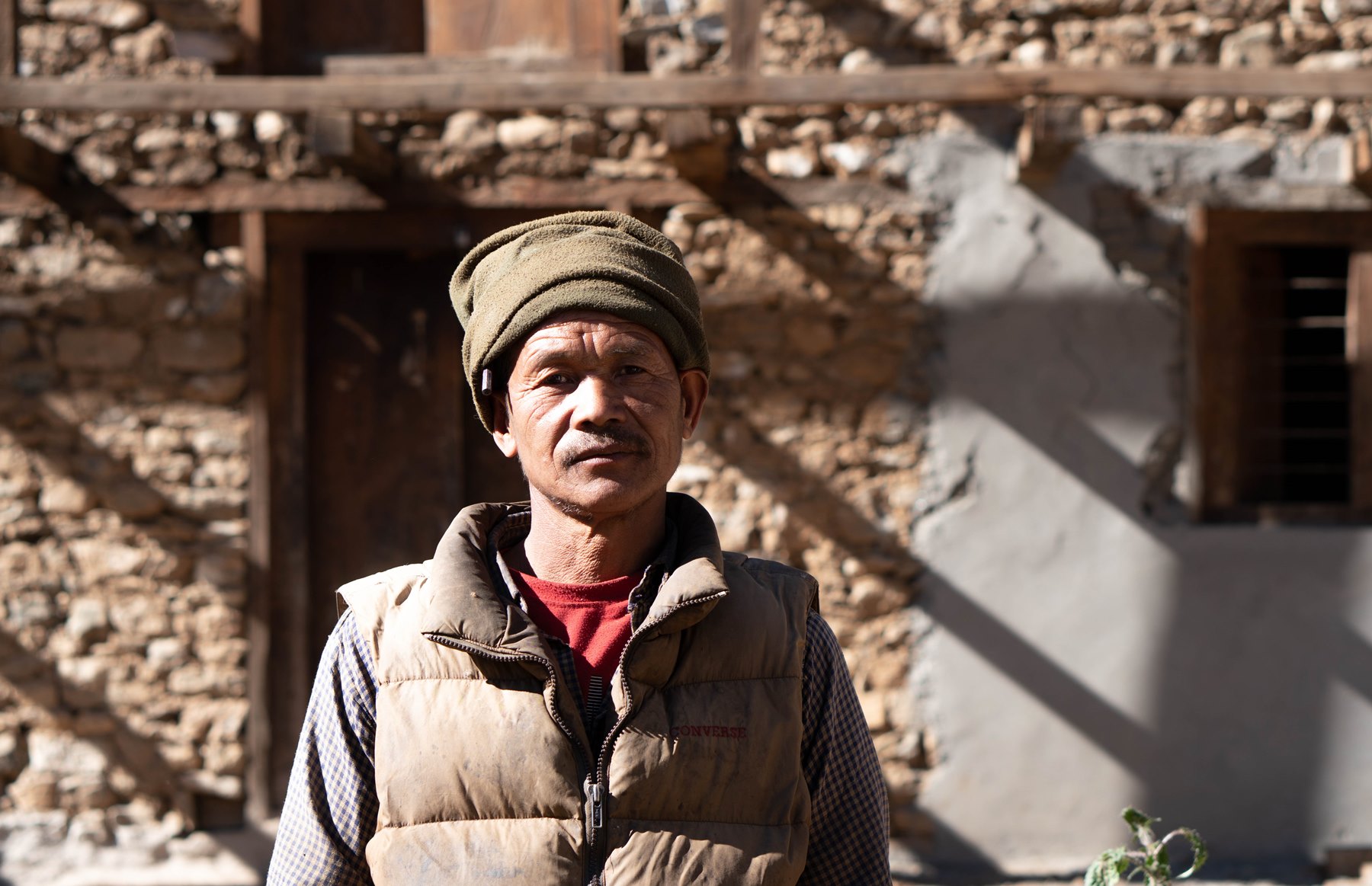
The unexpected destruction left his plans in disarray, but there was an immediate need to provide a warm shelter and hot food for his three children.
He has some savings from his seasonal work in India, but after he builds a temporary house with the government reconstruction grant Dhan Bahadur expects he will have to go to India to earn more money to complete the rebuilding.
Jasbir Thapa, 45, also returned from Kashmir for the Dasain holidays only to have witnessed first hand the devastation caused by the earthquake. The government's delayed aid and one-window policy compounded his worries, leaving him torn between family responsibilities and the need to migrate again to India for work to earn money.
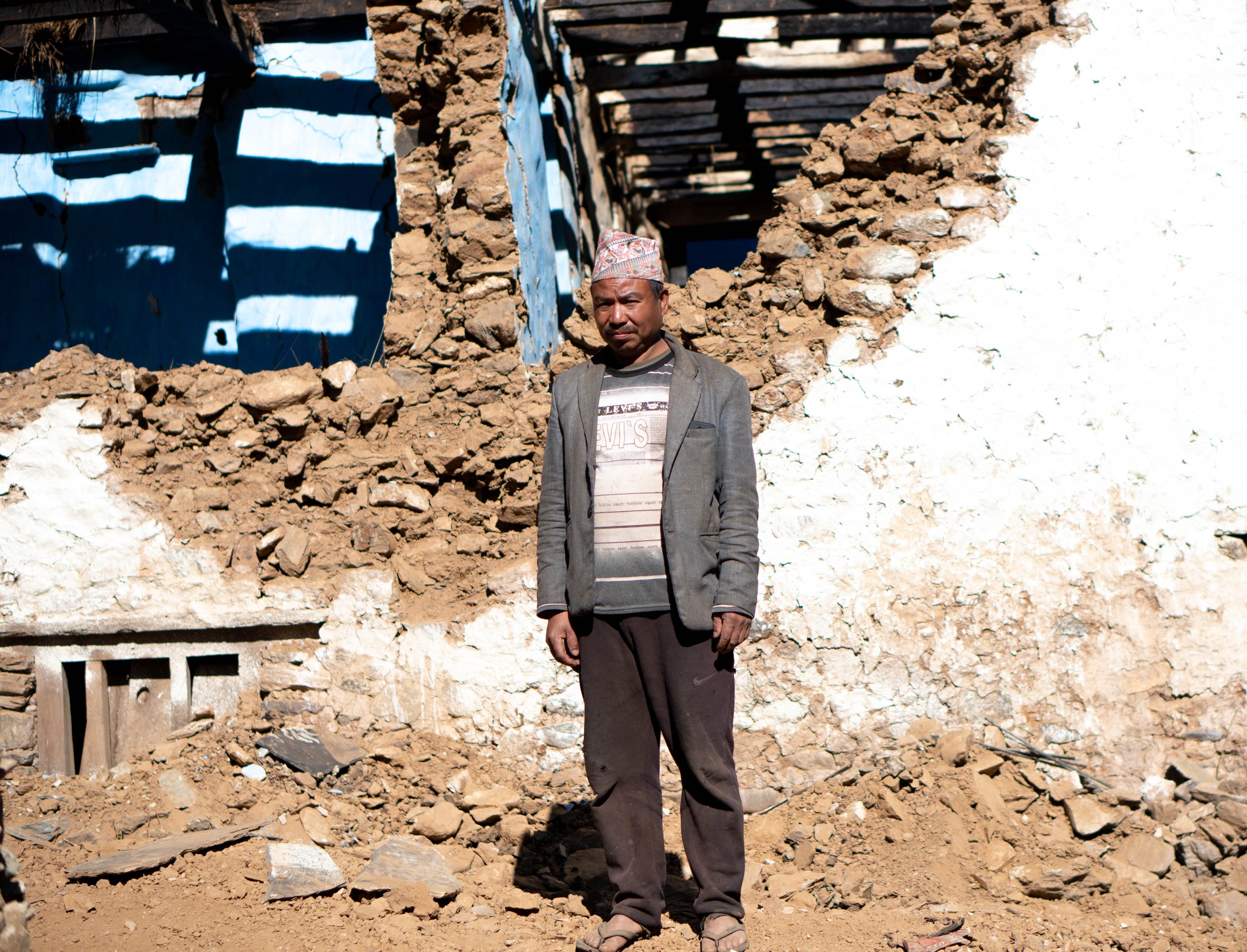
Even after two months, the initial instalment of the Rs50,000 grant for temporary housing from Kathmandu has not reached Sirpachaur.
Without jobs and earnings in Nepal, just about every one of the 150 households in Sirpachaur has at least one member working in India. It is hard manual work, and the pay is not good. Still it is more than they can hope for back home in Nepal.
"It's the same for everyone, survival is not possible in Nepal," says Thapa, “but working in India the pay is not proportional to the hard manual work we do.”
Despite the mountain of hardship on which the earthquake has heaped another layer of misery, there is a sense of community and a collective resilience with neighbours helping each other with the little they have.
Villages like Chiuari in Nalgad Municipality, have come together to construct each others’ temporary shelters. They are not waiting for the first instalment of Rs25,000 to come through, but use local material and volunteer labour to help rebuild.
Prasad Biswokarma got support from his fellow villagers, to erect a temporary shelter where at least his family would be protected from the bitter cold. He and the whole village are now bracing for rain and snow that is forecast for western Nepal next week.
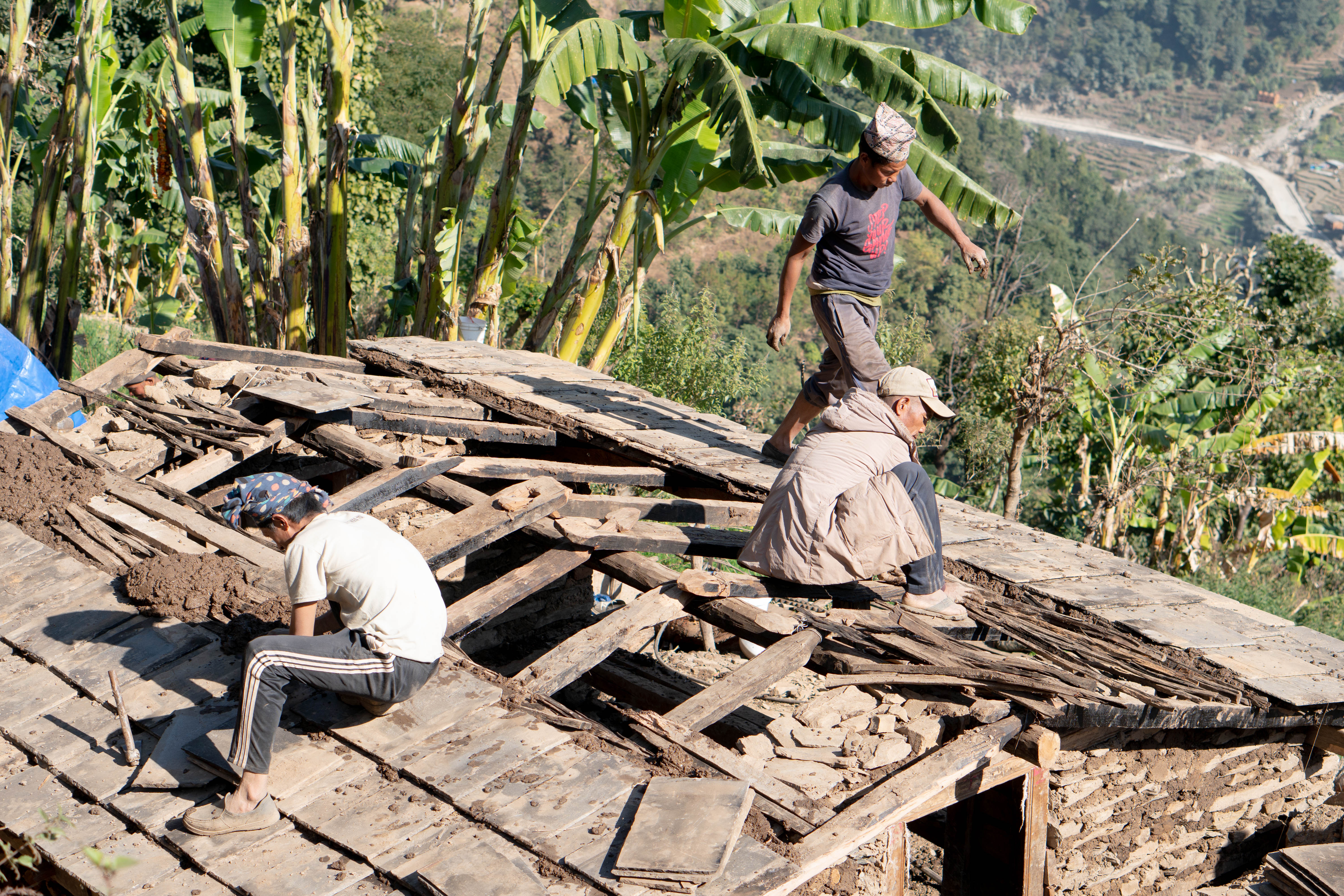
The collective struggle for recovery extends to sharing food, blankets, firewood and other essentials. Harikala Rokaya from Pali village has been waiting for government assistance, and help from charities but it never got to where she lives, off the road. With winter setting in and aid absent, she has built her own temporary shelter from salvaged bricks and timber.
Mayor Dammar Bahadur Raut of Nalgad Municipality admits that there is a delay in aid distribution, attributing it to bureaucratic hurdles. The allocation of reconstruction grants for temporary shelters from the National Disaster Risk Reduction and Management Authority has been marred by procedural delays mainly due to lack of coordination between various levels of government. The delay is affecting 50,000 families.
In Sirpachaur too villagers have been contributing voluntary labour for fellow survivors to rebuild. Local activists, and civil society organisations have also joined hands to help the villagers.
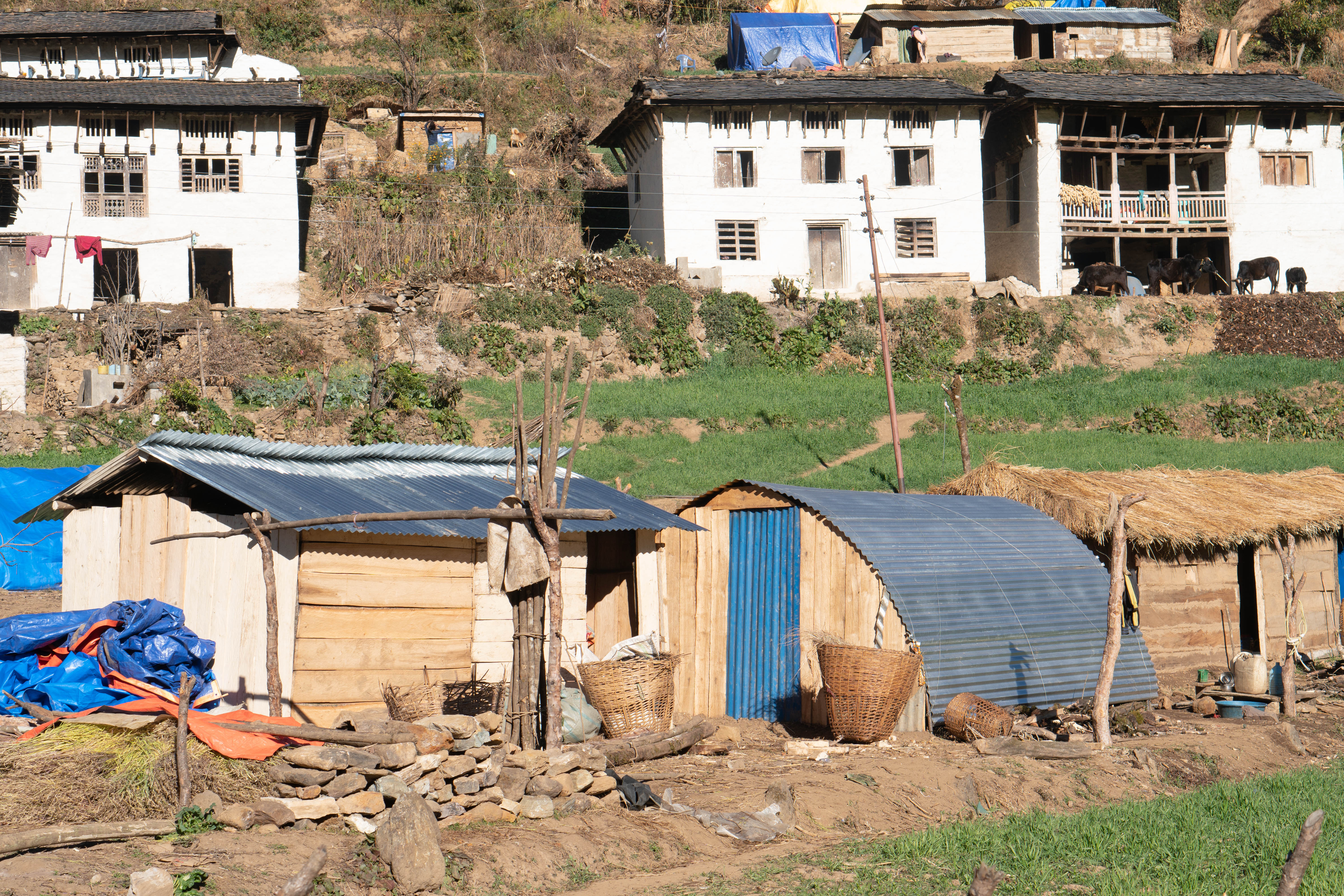
“The bureaucratic delay in aid disbursement is testing the will and endurance of the affected families, and we have seen exemplary support by community-driven initiatives in this critical time of crisis,” Mayor Raut adds.
Ward Chair Bir Bahadur Giri says migration to India is a safety valve, but says it also means that the men folk are away when there is reconstruction work to be done at home. Although many men who had returned for the Dasain festival and were at home when the earthquake struck will probably be staying a bit longer, sooner or later they will be going back to India.
With the men mostly away, there are mostly women, children and the elderly left in the earthquake-ravaged villages of Jajarkot and West Rukum. Many of the children are still traumatised by the destruction of the earthquake and the loss of family memories.
In one temporary shelter in Sirpachaur, 12-year-old Pashupati Gharti is a Grade 5 student, and still has visible signs of anxiety in his face when he remembers that fateful night. He tries his best with two elder sisters to help his family inside their tarp-roofed shelter.
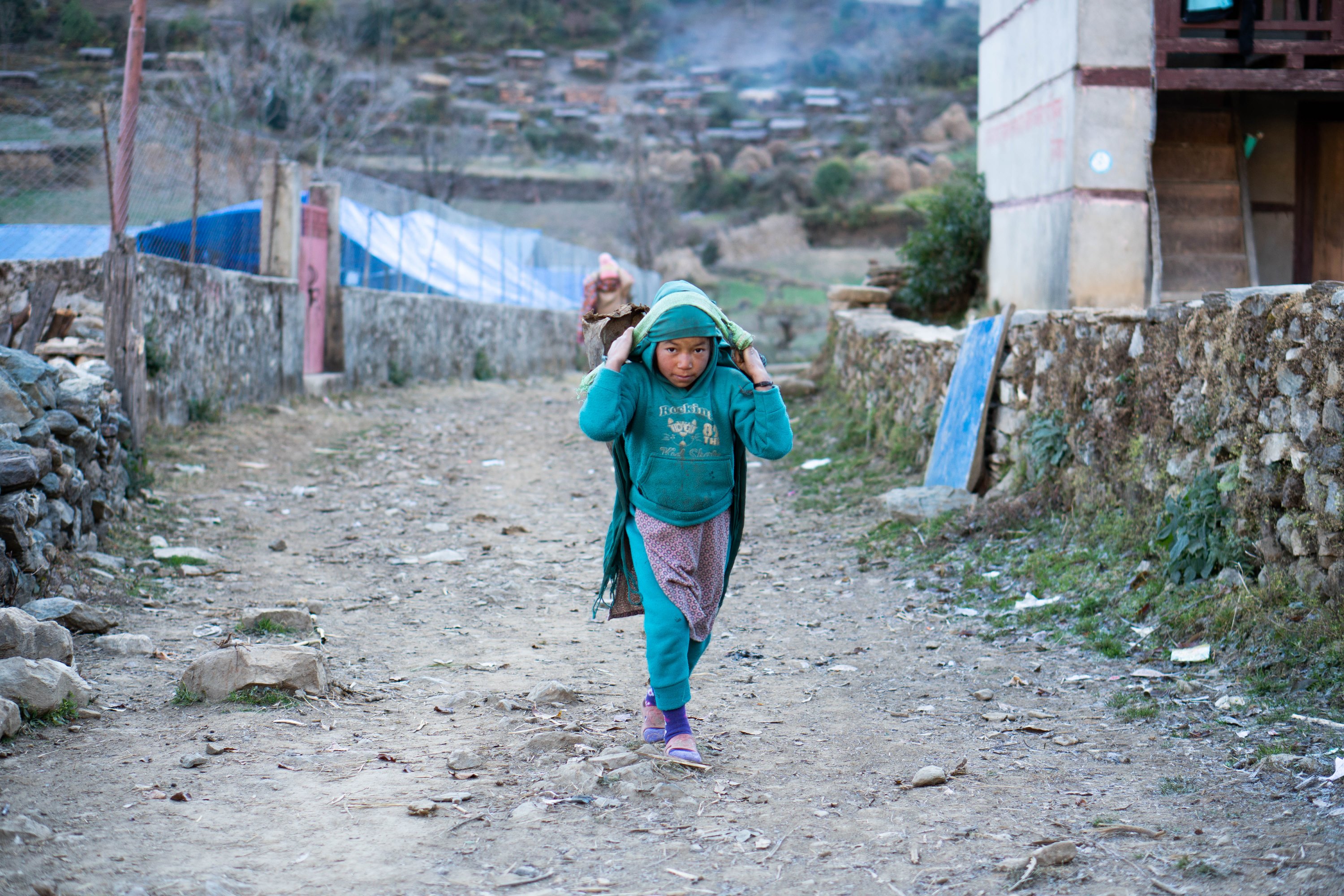
"I wonder when our house will be rebuilt," he says staring listlessly into the distance, and to no one in particular.
In the aftermath of the earthquake, the boy would have nightmares and missed many days of school. But time heals, and Pashupati is now determined to help with household work in the morning and go to school in the afternoon.
There is not a single house intact in this village, rubble still lies in piles on streets where children play Seven Stones trying to hit a pile of stones. For the headmaster of the local school, this is a hopeful sign that the children are starting to play again as their lives return to a semblance of normalcy.
The school building in Chiuri village is also damaged, and classes are held in tents or outdoors under the sun. It was fortunate that the earthquake struck at night, otherwise there may have been many casualties among students when either classrooms collapsed.
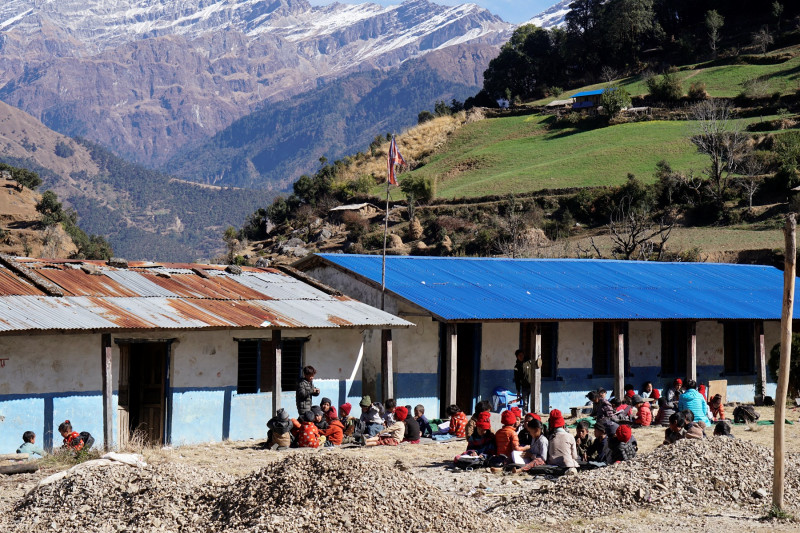
The earthquake claimed the lives of 13 children in Chiuri village alone. Of the 36 killed in Rukum West, 19 were children. Eighty-one children were among the 153 killed on 3 November — more than half the fatalities. Most of the adults killed were women.
Twenty-three of the children who survived lost both parents, and measures are being taken for their protection and care. Efforts are underway to provide counselling for affected children. Child Welfare Officer Pradeep Rawal says some parentless children sheltered in orphanages require more time to recover.
In Aathbis Kot Municipality of Rukum West which saw a heavy loss of life among children, counselling is being provided to children even though schools are closed for winter holidays.
Temporary school construction is underway in Jajarkot and Rukum West, where the current buildings lack proper classrooms due to building safety concerns.
In certain areas, parental involvement in building temporary shelters has facilitated continued education for children. Parents' collaboration, aided by outside support, means wooden shelters have come up in some locations to ensure children have space for learning.
At Himalaya Devi Basic School in Sirpachaur, parental support helps temporary management, and there is now room for 150 students when schools reopen. Mayor Raut is happy parents themselves are helping to put up temporary classrooms.
